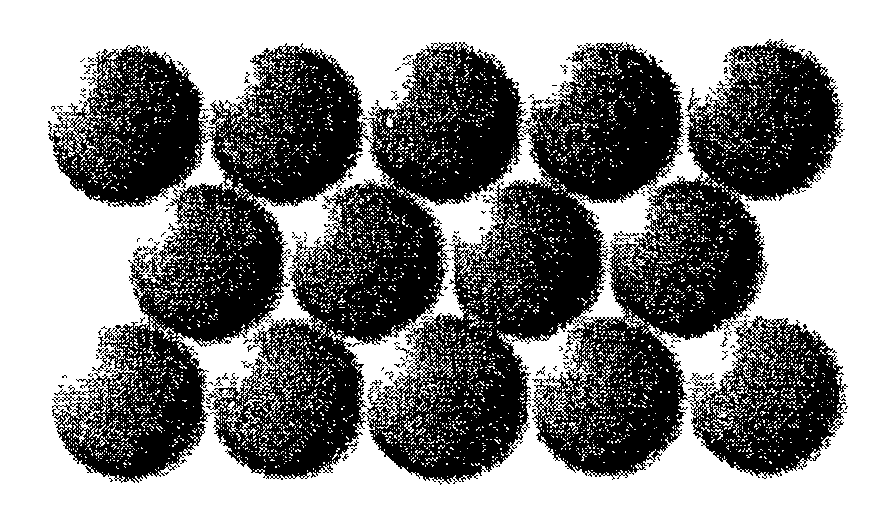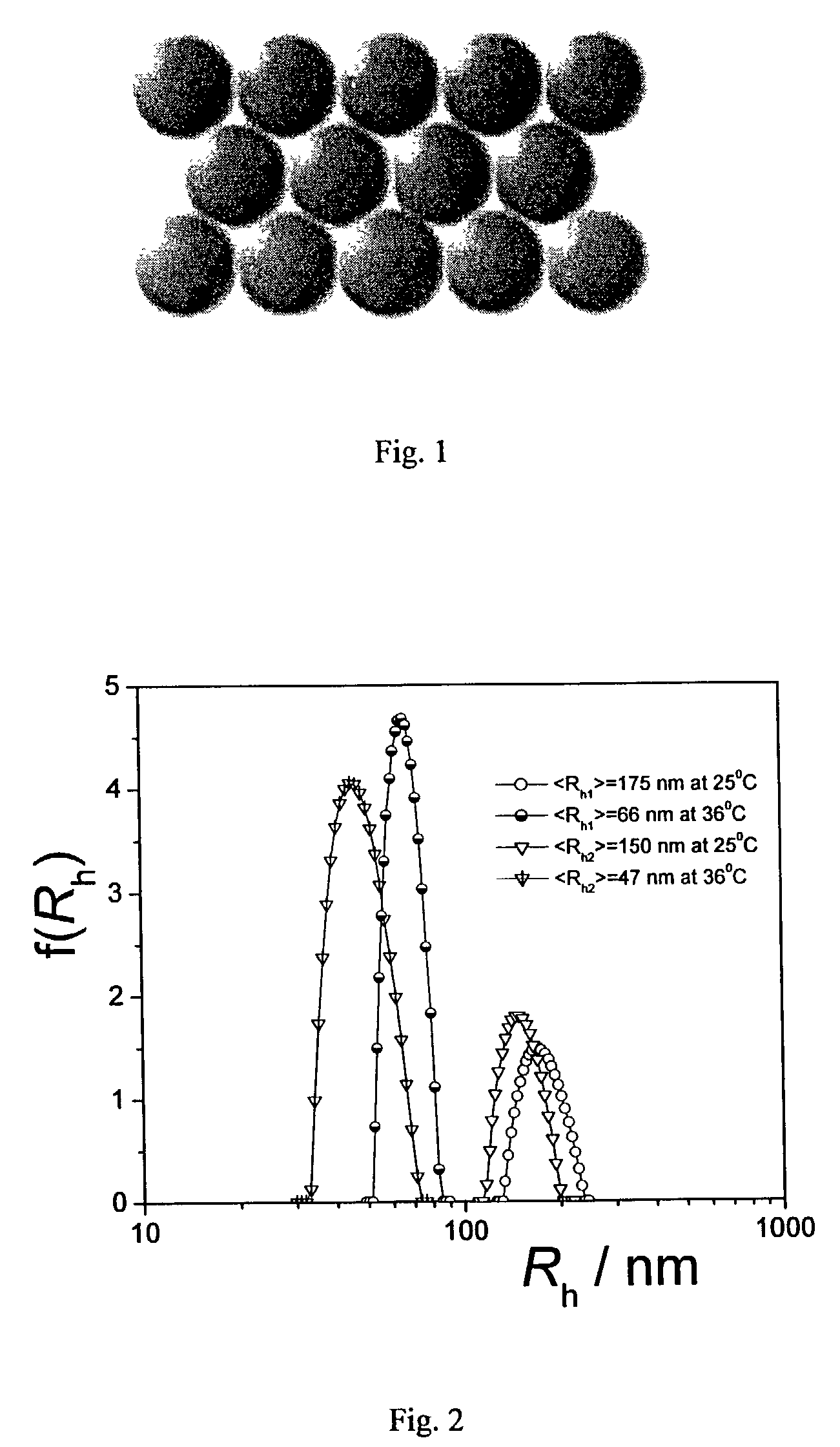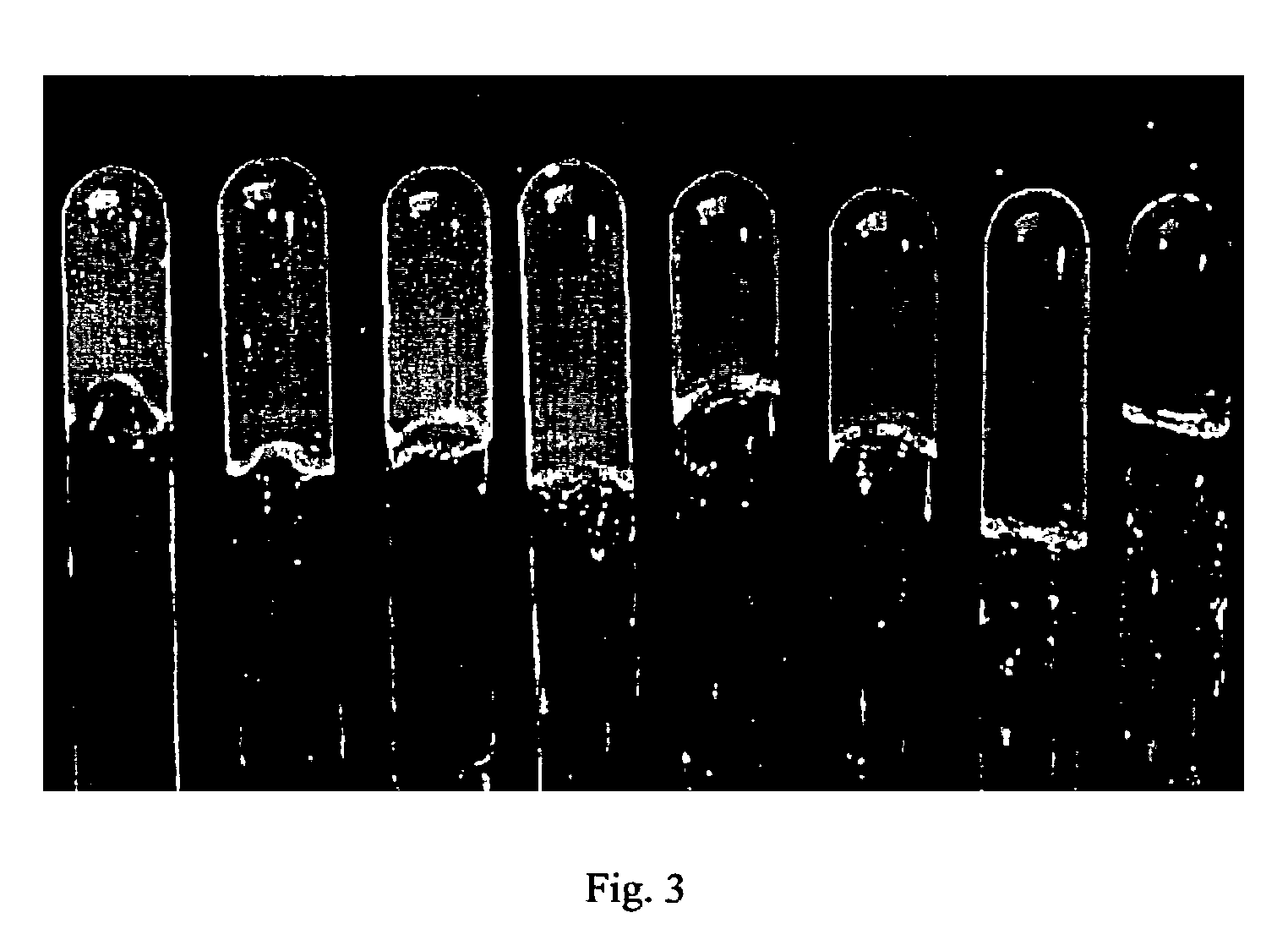Synthesis, uses and compositions of crystal hydrogels
a technology of crystal hydrogels and compositions, applied in the field of polymer chemistry and material science, can solve the problems of gel nanoparticles, suffer from practical size limitations, and each has its own limitations
- Summary
- Abstract
- Description
- Claims
- Application Information
AI Technical Summary
Problems solved by technology
Method used
Image
Examples
example 1
Synthesis of NIPA-HEAc Nanoparticles
[0058]3.79 g NIPA monomer, 66 mg methylene-bis-acrylamide as crosslinker, 0.120 g sodium dodecyl sulphate as surfactant, and 260 mL deionized water were mixed in a reactor.
[0059]2-hydroxyethyl acrylate (HEAc) (9.5% molar ratio) used to provide functional groups was added to the pregel solution. The solution was heated to 70° C. under nitrogen for 40 min. 0.170 g of potassium persulfate dissolved in 21 mL of deionized water was added to start the polymerization reaction. The reaction was carried out at 70° C. under nitrogen atmosphere for 4 hours to ensure that all monomer was reacted. After cooling down to room temperature, the final reaction dispersion was exhaustively dialyzed in a dialysis tube for 10 days while the deionized water (conductivity of less then 1 μS·cm−1) outside the tube was changed twice a day. The dispersion was first evaporated at 60° C. and then dried at 120° C. The concentration of the dialyzed dispersion was calculated from...
example 2
Compositions for Synthesis of NIPA-HEAc Crystal Hydrogels
[0061]The dispersion of the particles was dialyzed to remove all small molecules, and the dispersion was concentrated with ultra-centrifuging. After the concentrated dispersion was heated above the phase transition temperature, divinylsulfone (DVS) as a crosslinking agent was added to the system dropwise in order to make DVS homogeneously dispersed throughout the solution. Then, the dispersion was cooled below 25° C., and NaOH solution at pH=13.0 was added. The formation of large colloidal crystals in a very narrow concentration range (ca. 3˜5 wt %), at 20° C., yields colored speckles from typical Bragg diffraction as shown in FIG. 4.
[0062]The effect of polymer concentration on formation of the crystal hydrogels is shown in Table 2. Here, the average hydrodynamic radius of the NIPA-HEAc nanoparticle spheres in water at 25° C. was 150 nm.
[0063]
TABLE 2Effect of polymer concentration on formation of the crystal hydrogelsConc.RhCr...
example 3
Effect of NIPA-HEAc Particle Size on the Formation of Crystal Hydrogels.
[0064]The range of concentrations for forming large hydrogel crystal grains depends on the particle size. Emulsion polymerization of NIPA monomer, HEAC monomer and cross-linking agent, methylene-bis-acrylamide (BIS), was performed in water at 70° C., using different amounts of sodium dodecylsulfate (SDS, cmc of 8.3 mM in water at room temperature) as surfactant to control particle size. As shown in FIG. 5, the average hydrodynamic radii for the two red samples (left) and the two green samples (right) in water at room temperature were 175 and 150 nm, respectively. From left to right, the particle concentrations were 3.0, 3.1, 3.8, and 4.0 wt %.
PUM
| Property | Measurement | Unit |
|---|---|---|
| particle size | aaaaa | aaaaa |
| particle size | aaaaa | aaaaa |
| particle size | aaaaa | aaaaa |
Abstract
Description
Claims
Application Information
 Login to View More
Login to View More - R&D
- Intellectual Property
- Life Sciences
- Materials
- Tech Scout
- Unparalleled Data Quality
- Higher Quality Content
- 60% Fewer Hallucinations
Browse by: Latest US Patents, China's latest patents, Technical Efficacy Thesaurus, Application Domain, Technology Topic, Popular Technical Reports.
© 2025 PatSnap. All rights reserved.Legal|Privacy policy|Modern Slavery Act Transparency Statement|Sitemap|About US| Contact US: help@patsnap.com



